SOURCE: RAUNAK KUNDE / NEWS BEAT / IDRW.ORG
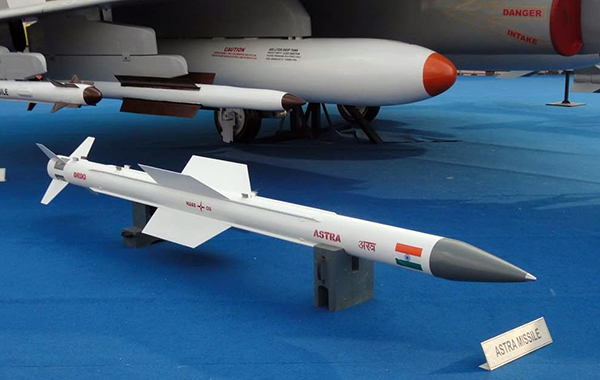
In a strategic move to bolster its defence capabilities, the Indian Air Force (IAF) has initiated collaboration with Dassault Aviation, the manufacturer of Rafale fighter jets. The objective is to integrate advanced Indian-made weaponry, specifically the ‘Astra Air-to-Air Missile,’ into these combat aircraft. This integration represents a significant step forward in enhancing the Rafale’s combat capabilities.
Under this collaboration, the IAF will take responsibility for the costs associated with integrating the Astra Beyond Visual Range air-to-air missile onto the Rafale aircraft. Dassault Aviation will be tasked with developing the essential software codes required for seamless interaction between the missile and various sensors and avionics onboard the fighter.
Continue readingSOURCE: RAUNAK KUNDE / NEWS BEAT / IDRW.ORG

India’s Defense Research and Development Organization (DRDO) is forging ahead with ambitious Airborne Early Warning and Control System (AEW&CS) programs, Netra MkII aimed at upgrading India’s AEW&CS capabilities. DRDO’s Center for Airborne Systems (CABS) is spearheading this initiative, which involves the conversion of six pre-owned A321 aircraft from Air India into AEW&CS platforms.
These aircraft will be equipped with a dual-sided antenna array housed in a dorsal ‘plank’ fairing, similar to the Netra MkI. However, significant improvements in search and tracking capabilities will be achieved, thanks to the higher power output from the aircraft’s advanced engines.
Continue readingSOURCE: RAUNAK KUNDE / NEWS BEAT / IDRW.ORG
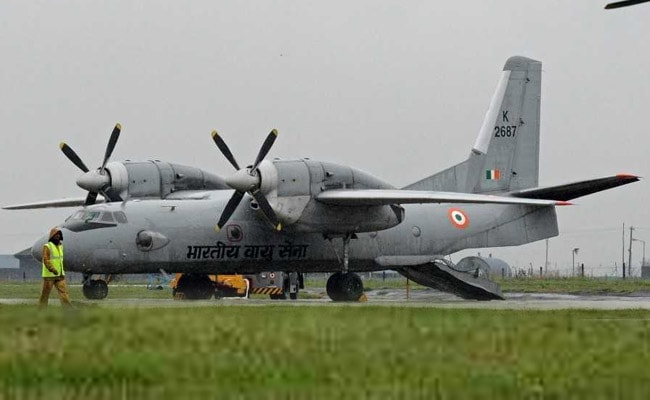
The Indian Air Force (IAF) has embarked on a mission to find a suitable replacement for its ageing AN-32 transport aircraft, as the earliest members of this fleet are set to mark 44 years in service by 2031-32. The AN-32, initially introduced in 1986, has served the IAF diligently for decades, but with the passage of time and the collapse of the Soviet Union, the aircraft’s reliability and availability have been increasingly compromised.
While the AN-32 was known for its robust performance and powerful engines, the challenges of sourcing spare parts and addressing obsolescence issues have taken a toll on its longevity. In response to these concerns, an ‘upgrade’ initiative was proposed in 2009 to enhance the aircraft’s structural integrity, avionics, and communication systems.
Continue readingSOURCE: IDRW.ORG TEAM

The eagerly awaited 2nd edition of the Swavlamban seminar is set to showcase significant progress and remarkable achievements in niche technologies that are instrumental in reinforcing India’s self-reliance in the defence sector. With a specific focus on groundbreaking technologies like Carbon Nano Tubes and Aerogel-based fabrics, this seminar underscores the nation’s commitment to innovation and indigenous manufacturing. Let’s delve into the key highlights and objectives of this prestigious event.
Aatmanirbhar Bharat, India’s vision for self-reliance, particularly in the defence sector, is taking center stage at the Swavlamban Seminar 2023. This initiative aims to reduce dependency on foreign technology and promote the development and adoption of homegrown innovations. The event exemplifies India’s relentless pursuit of self-reliance and technological advancement in defence.
Continue readingSOURCE: IDRW.ORG TEAM
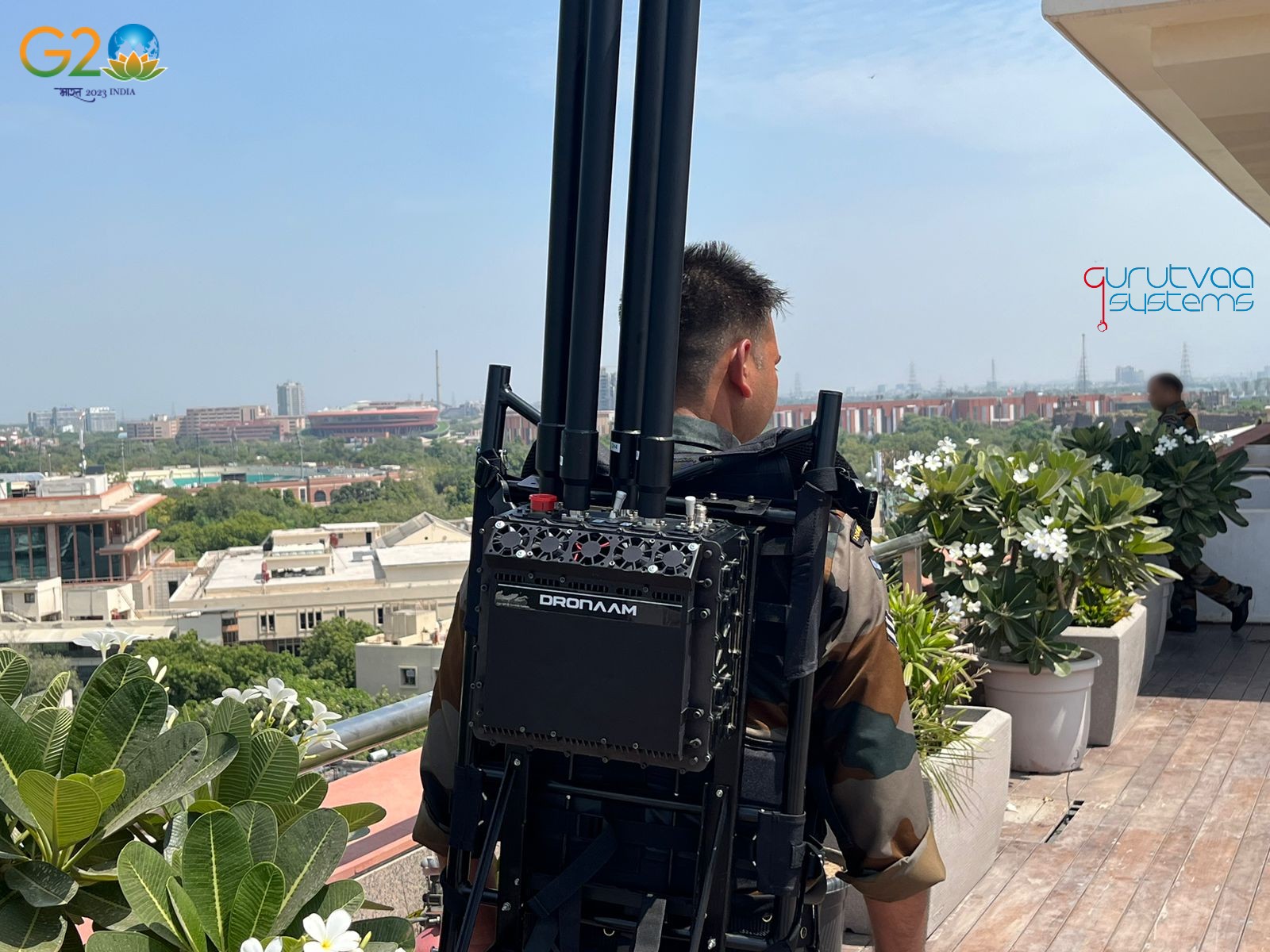
During the recent G20 summit, security measures were bolstered by the deployment of India’s indigenous counter-unmanned aerial system (C-UAS) known as Dronaam. Developed by the Indian private sector company Gurutvaa Systems, Dronaam played a vital role in providing security cover against rogue drones. This state-of-the-art system is designed to disrupt the navigation and radio frequencies of unauthorized unmanned aerial vehicles (UAVs), ensuring the safety of high-profile events and critical installations.
Dronaam, developed by Gurutvaa Systems, is a cutting-edge modular C-UAS designed to offer foolproof protection against illegal unmanned aerial systems (UAS). It is a versatile system that can provide directional or omni-directional coverage, making it suitable for various security scenarios. The system can be configured as a fully integrated rifle-style device or a portable countermeasure in a backpack configuration. It is equally effective in fixed installations, where it can be mounted on moving or stationary platforms, offering the option of directional or omni-directional coverage.
Continue readingSOURCE: RAUNAK KUNDE / NEWS BEAT / IDRW.ORG
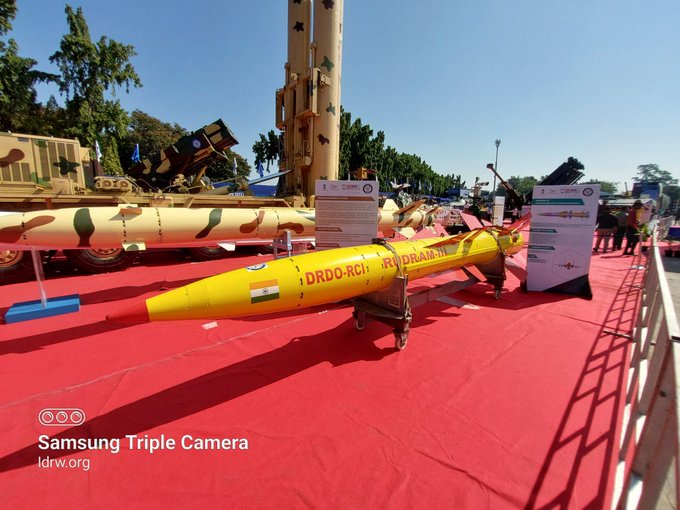
Hindustan Aeronautics Limited, Nashik Division, is gearing up for a series of critical activities to carry out Captive Trials of RudraM-III Air to Surface Missile aimed at enhancing the capabilities of the Su-30 MKI aircraft. These trials will involve various modifications and installations on the aircraft to enable the integration of advanced technologies and munitions.
Su-30 MKI aircraft, designated as SB-214, will undergo activation of trial modifications at stations No. 5 and 6. SB-214 was also used to test Astra BVRAAM and NGARM advanced missile systems in past.
Continue readingSOURCE: RAUNAK KUNDE / NEWS BEAT / IDRW.ORG
General Electric (GE) is poised to secure a substantial order for 120 F404-GE-IN20 engines as the Hindustan Aeronautics Limited (HAL) and the Indian Air Force (IAF) prepare to finalize a deal for the supply of more than 100 LCA-Tejas Mk1A fighter jets, expected to be signed next year. This development follows HAL’s 2021 contract with GE Aviation, valued at $716 million, for 99 F404 engines to power 73 LCA-Tejas Mk1A and 10 Tejas Mk1A Trainer aircraft.
To date, 75 F404 engines have been delivered, and an additional 99, also valued at $716 million, are on order for the Tejas Mark 1. GE Aviation is set to commence deliveries of the first batch of F404-GE-IN20 engines later this year, with ongoing deliveries coinciding with the production of LCA-Tejas Mk1A jets.
Continue readingSOURCE: RAUNAK KUNDE / NEWS BEAT / IDRW.ORG
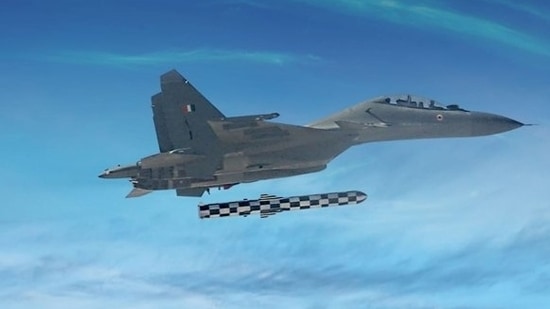
In a significant development for India’s military aviation capabilities, the country is set to test a Common Launcher designed for its Su-30MKI fleet in the coming year. This launcher, which has been in development for some time, aims to revolutionize the flexibility and efficiency of weapon integration into the Su-30 aircraft.
The concept for the Common Launcher was conceived last year when the Indian Air Force identified the need for a versatile launcher that could accommodate various weapons and pods for different mission requirements under the Make-II (Industry Funded) initiative.
Continue readingSOURCE: IDRW.ORG TEAM

India and the United States are on the verge of finalizing a groundbreaking deal for the transfer of technology (ToT) for the F414-GE-400 turbofan engines, which will be manufactured in India. The US Congress has granted approval for the deal, with no objections from its members, clearing the path for negotiations on pricing before the agreement is officially signed.
The F414-GE-400 turbofan engine, when produced by General Electric (GE) in its facilities, has an average cost of approximately $3.71 million per unit. However, even with domestic production in India, the price is expected to remain below the $4 million per unit mark. This cost-efficiency is attributed to the large order size and the involvement of numerous private sector companies in local engine manufacturing.
Continue readingSOURCE: IDRW.ORG TEAM
On September 7, 2023, Bharatiya Janata Party (BJP) Rajya Sabha member G.V.L. Narasimha Rao paid a visit to Hindustan Shipyard Limited (HSL) for discussions with its Chairman and Managing Director (CMD), Cmde Hemant Khatri (retired). During their meeting, the backdrop featured the ongoing development of the second Diving Support Vessel (DSV) named “Nipun,” being constructed at Hindustan Shipyard Ltd, Visakhapatnam. This visit comes a year after the launch of the first DSV, “Nistar,” on September 22, 2022, in Visakhapatnam.
The Diving Support Vessels, “Nistar” and “Nipun,” are equipped with a comprehensive array of complex Diving Support systems and a Deep Submergence Rescue Vessel (DSRV). These vessels are designed to be deployed for deep-sea diving and submarine rescue operations, making them a critical asset for the Indian Navy. Additionally, they possess the capability to conduct Search and Rescue operations and facilitate Helicopter Operations at sea.
Continue readingSOURCE: RAUNAK KUNDE / NEWS BEAT / IDRW.ORG

In a recent interview with Indian media outlet NDTV, Ajuri Ngelale, spokesperson for Nigeria’s President Bola Tinubu, expressed Nigeria’s keen interest in acquiring Indian defence technology, including the Light Combat Aircraft (LCA) Tejas. Ngelale also mentioned Nigeria’s interest in technology transfers related to drones and more advanced armoured personnel carriers.
Nigeria’s Armed Forces have been actively modernizing their defence capabilities, with a particular focus on air superiority and ground attack capabilities. The Nigerian Air Force (NAF) currently operates a range of advanced fighter jets, including the JF-17, F-7Ni, A-29 Super Tucanos, and the Alpha Jet. These aircraft are capable of engaging both aerial and ground threats, ensuring Nigeria’s air superiority.
Continue readingSOURCE: RAUNAK KUNDE / NEWS BEAT / IDRW.ORG

JSR Dynamics Private Limited, a Nagpur-based private limited company, has secured a significant victory by winning the Indian Navy Open Challenge 8.0 for the development of a Long Range Powered Precision Guidance Munition. This achievement underscores the company’s commitment to advancing India’s defence capabilities and highlights its innovative approach to munition technology.
JSR Dynamics: A Pioneer in Defense Technology JSR Dynamics, led by Air Marshal (Retd) SB Deo, has emerged as a key player in India’s defence technology landscape. The company specializes in the development and manufacturing of a wide range of defence systems, including glide bombs, range extension kits, cruise missiles, and loitering munitions. With a strong focus on research and innovation, JSR Dynamics has become a formidable force in the defence sector.
Continue readingSOURCE: RAUNAK KUNDE / NEWS BEAT / IDRW.ORG
India’s Akash-NG (Next Generation) surface-to-air missile system, a short-range mobile system with a range of up to 30 kilometres, is gearing up for confirmatory trials later this year in a near-production standard variant. This development comes after the successful testing of the system in 2021, marking a significant advancement in India’s air defence capabilities.
Earlier this year, Bharat Dynamics Limited (BDL) achieved a crucial milestone by delivering the first Radio Frequency (RF) Seeker of the Akash-NG Weapon System. This RF Seeker, produced at BDL’s newly commissioned state-of-the-art Seeker Facility Centre (SFC), was handed over to the Defence Research and Development Organization (DRDO). The RF Seeker is a pivotal and technologically advanced subsystem used in Surface-to-Air Missiles (SAMs) and Air-to-Air Missiles (AAMs) for target tracking during the terminal phase of flight.
Continue readingSOURCE: IDRW.ORG TEAM
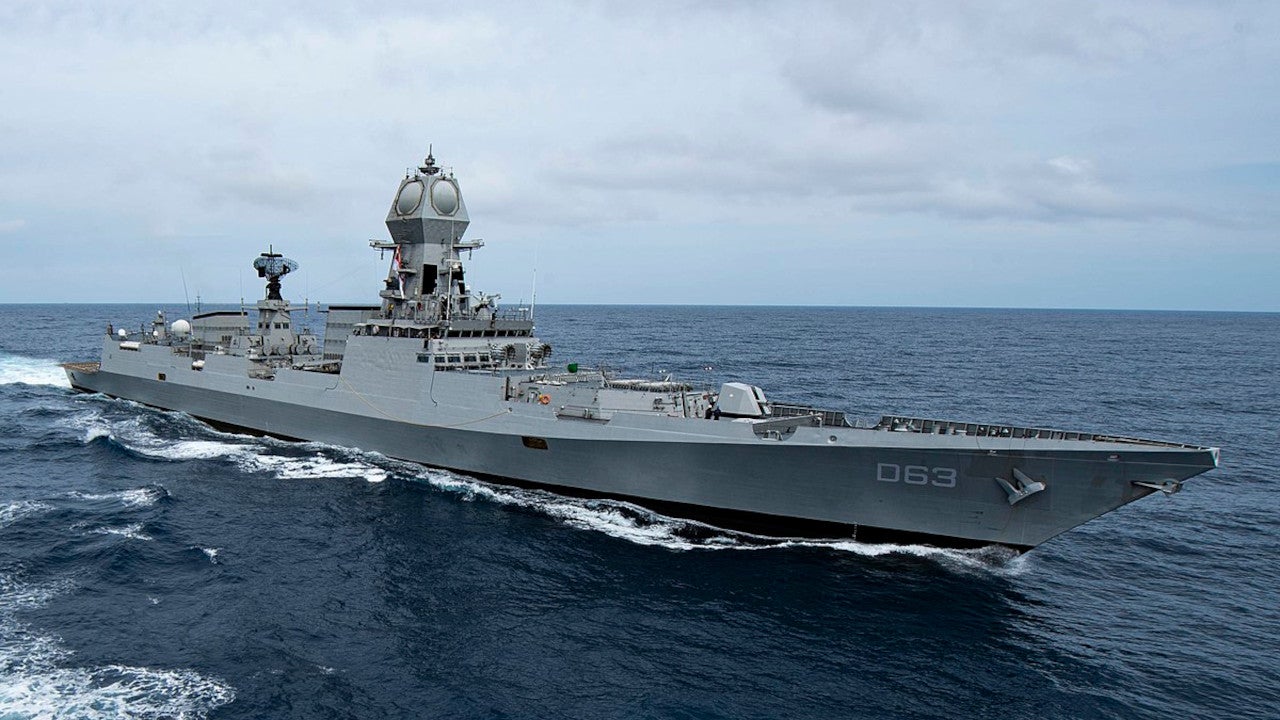
The Indian Navy is charting a course into the future by embracing Artificial Intelligence (AI) technology to enhance its ship systems, command and control infrastructure, and decision-making capabilities. AI has been recognized as a transformative force in naval operations worldwide, with the United States Navy’s Naval Research Laboratory establishing the Navy Center for Applied Research in Artificial Intelligence in 1981. The Indian Navy is now following suit, recognizing the immense potential of AI and Machine Learning (AI/ML) applications in modern naval warfare.
The integration of AI technologies into naval operations is centered around two primary areas: autonomous/unmanned systems and decision sciences. These technologies hold the promise of revolutionizing the way navies conduct missions, respond to threats, and enhance situational awareness.
Continue readingSOURCE: IDRW.ORG TEAM
The Kaveri derivative engine, known as the Dry Kaveri, is poised for another round of critical trials in Russia early next year. These upcoming trials are expected to represent the final phase of the engine’s development journey. GTRE (Gas Turbine Research Establishment) has ordered engine modules from Godrej Aerospace, which will be assembled and transported to Russia for a series of tests, including simulated high altitude trials and flight test bed assessments.
The primary purpose of the Kaveri Dry engine is to provide propulsion for India’s groundbreaking stealth unmanned combat aerial vehicle (UCAV) known as the Ghatak. The engine has already demonstrated its capabilities by successfully passing simulated high altitude tests in Russia. The next step involves integrating the Kaveri Dry engine into a specialized flying test bed (FTB), which is a modified Ilyushin (Il)-76 fixed-wing aircraft powered by four turbofan engines. During these trials, one of the Il-76’s four engines will be replaced with the Kaveri Dry engine.
Continue reading